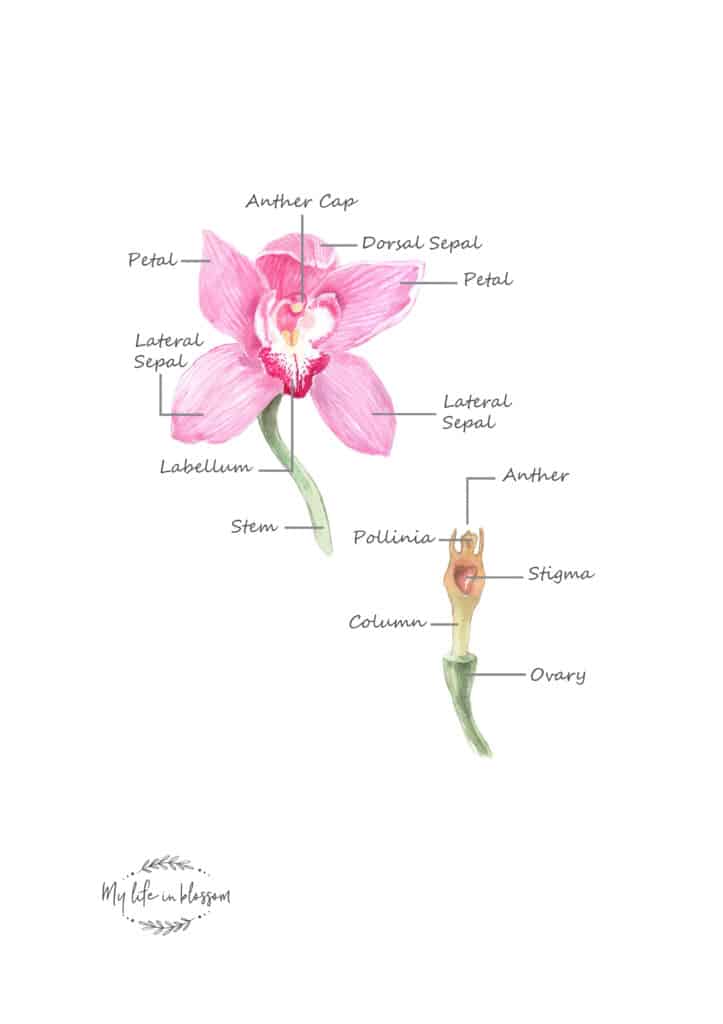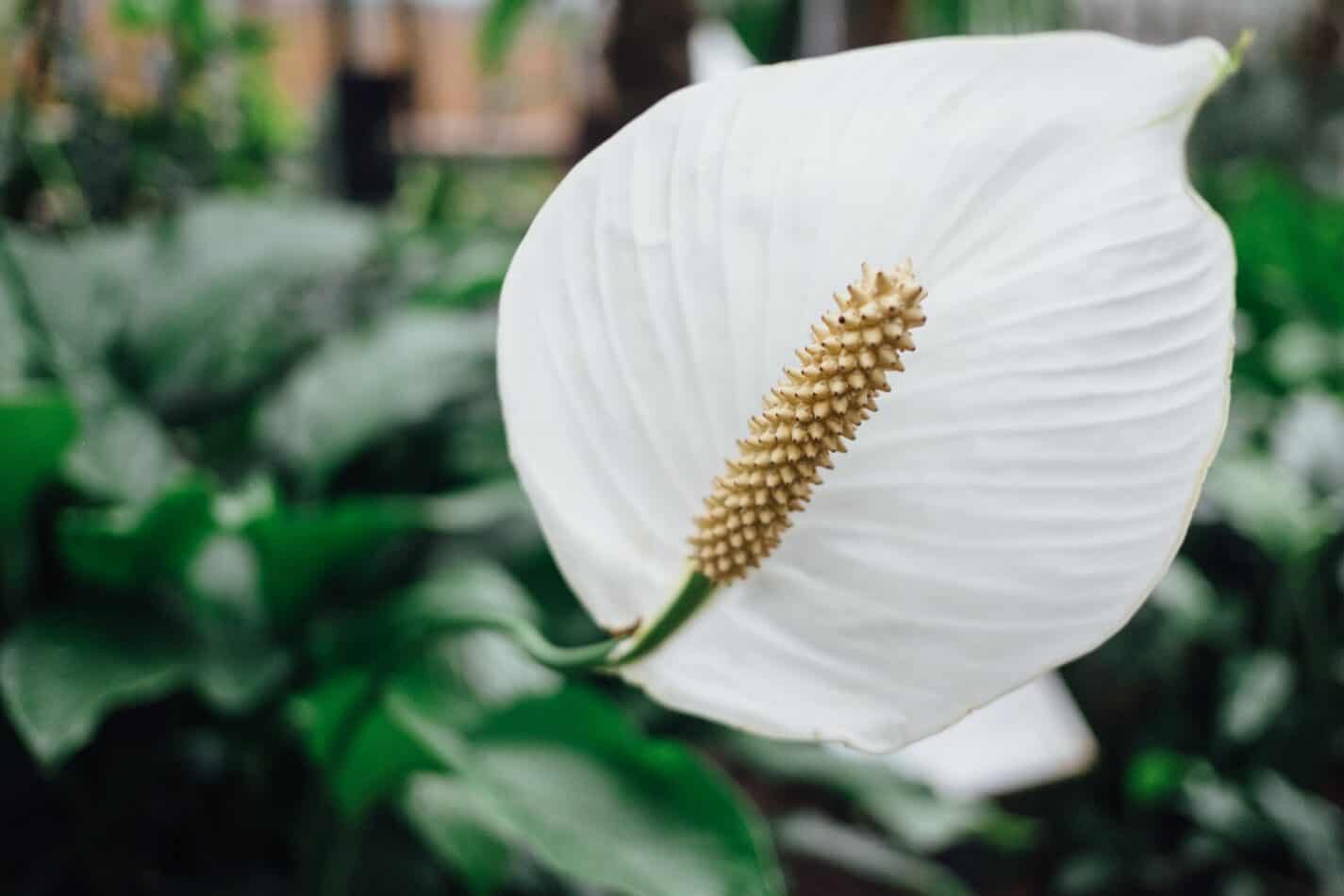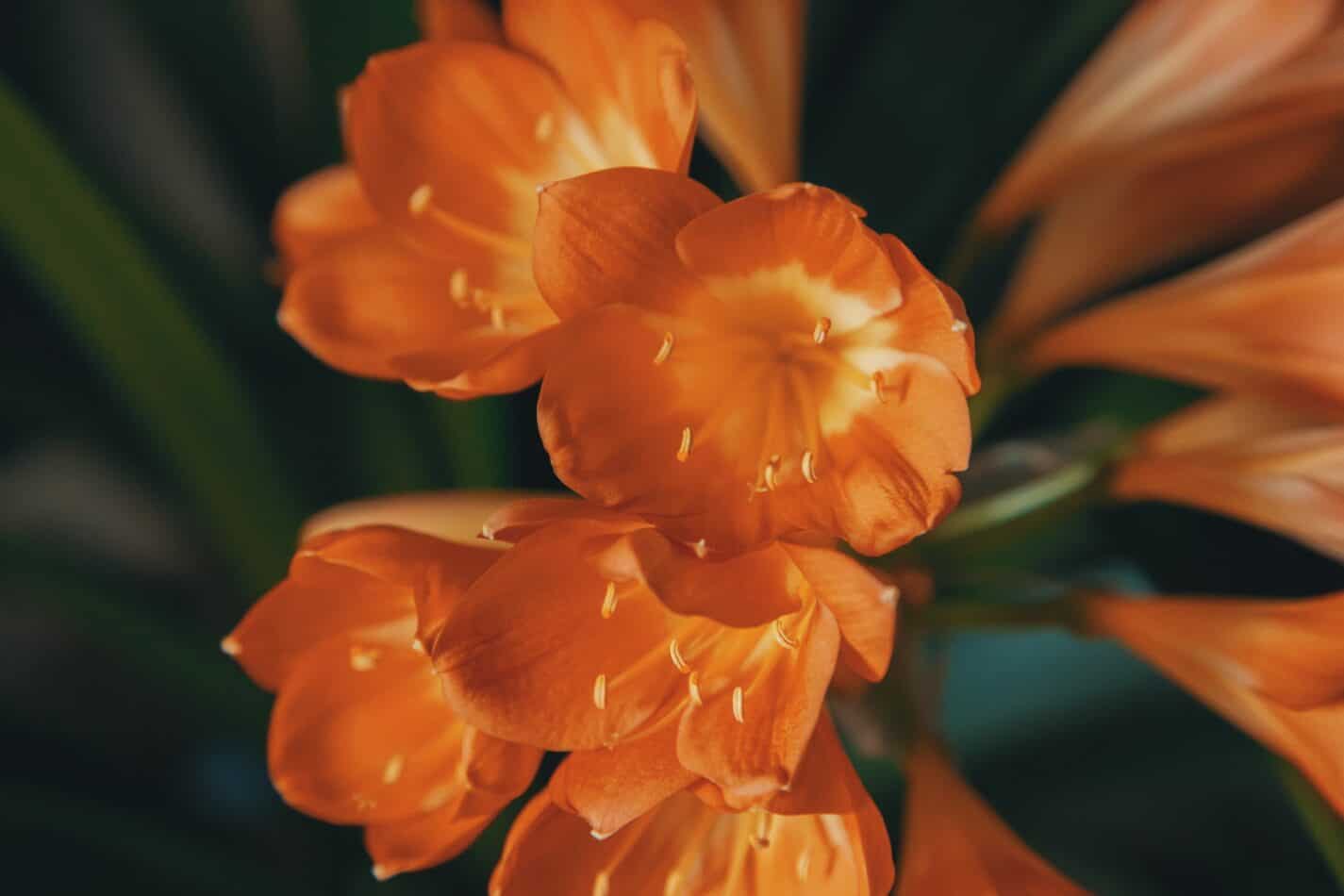Have you ever been curious about the anatomy of a flower? There’s no delicate way to put this; flowers are the naughty bits of angiosperms (commonly known as flowering plants) whose primary use is for sexual reproduction. Sure, they look beautiful to people and attractive to bees and butterflies, but their primary purpose is as sexual organs. And even though flowers come in a wide variety of shapes, sizes, and colors, nearly all of them have the same basic anatomy.
Parts of a flower diagram
This is a diagram of the parts of a flower with the names of all the common organs and structures.

The Naughty Bits
Let’s start with a flower’s male organs.
The anther is where pollen is produced. Pollen is a powdery substance consisting of pollen grains that contain the male gametes. It’s the equivalent to sperm in animals.
The pollinia are where the pollen is stored before being released into the world. Sometimes pollen is distributed on the wind. Other times it is transferred from flower to flower by animals such as birds and bees. Hence the euphemism, the birds and the bees.
https://www.instagram.com/p/B_-AP89jTv-/?utm_source=ig_web_copy_link
But flowers quite often have both male and female organs housed in a single column. The stigma is the part of the column that receives pollen. The pollen is then transferred through the column to the ovary, the female part of the flower where fertilization occurs.
To prevent self-fertilization, the anthers and ovaries of many flowers mature at different times. Other flowers don’t seem to mind a bit of self-fertilization. Like all relationships, it gets a bit complicated sometimes.
Supporting Players
But there’s more to flowers than just their sexual organs. There are a whole bunch of structures that help support the flower and aid in fertilization.
Petals are modified leaves that have been repurposed to surround the column of the flower. And as we all know, they can come in a wide variety of shapes and colors, even in parts of the spectrum we can’t see (but insects can) such as ultraviolet. The labellum is a specialized petal that is quite often used by flowers to assist insects in pollinating a flower.
When a flower’s bud first appears, the sepals act as a protective cover. But when a flower opens, they can act as both structural support for the flower, or as part of their attractive display. They are referred to as either dorsal or lateral sepals depending on their location on the flower. (Lateral on the sides, and dorsal towards the back.)
https://www.instagram.com/p/CAED6ohjwsT/?utm_source=ig_web_copy_link
As you would expect, the anther cap is a cover for the anther. It’s another mechanism used by the flower to prevent self-pollination. And, of course, the stem is used to support the whole kit-and-caboodle.
What Happens Next?
But that’s not the end of a flower’s story. After fertilization, most of the flower withers and dies, but some parts of the flower become repurposed. The ovary transforms into a fruit, and the ovules (the female reproductive cells) become seeds. So when you eat seeds and fruits, you are essentially eating the female parts of a flower.
https://www.instagram.com/p/B_44KouDWMN/?utm_source=ig_web_copy_link
Now you understand flower anatomy, you’ll never look at them in quite the same way. Not only are flowers attractive to look at, but they are wonders of design and function.
What we love from Amazon this week
Buy these wonderful flowers directly from Amazon:















